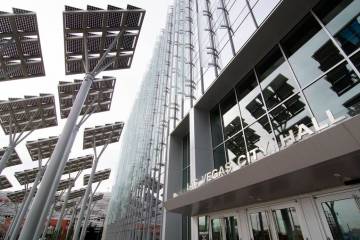For politicians eager to strike a blow against the “polarization” that worries elites, there’s no better place to start than biofuels.
Under federal law, the Environmental Protection Agency establishes “specific annual volume standards for total renewable fuel and also for the specific renewable fuel categories of cellulosic biofuel, biomass-based diesel, and advanced biofuel.” In 2013, refineries were required to produce 16.55 billion gallons of the stuff.
Conservatives and libertarians have long opposed the package of subsidies, tax breaks, and tariffs bestowed on ethanol and biodiesel. In 1999, the Cato Institute’s Jerry Taylor denounced “America’s most obnoxious and cloying welfare recipient — the corn farmer.” For decades, The Wall Street Journal’s editorial page has crusaded against Washington’s slavish favoritism to biofuels, calling it “industrial policy.”
But “Avoiding Bioenergy Competition for Food Crops and Land,” a working paper from the World Resources Institute (WRI) makes a compelling liberal indictment of using food for fuel.
The organization’s moonbat credentials are unassailable. WRI was founded with money from the John D. and Catherine T. MacArthur Foundation, which “supports creative people and effective institutions committed to building a more just, verdant, and peaceful world.” (Its list of “Genius Grant” recipients is awfully light on right-wingers.) The institute’s hysteria-meter is set to maximum — it claims that humanity is “depleting Earth’s resources at rates that are not sustainable, endangering economies and people’s lives. People depend on clean water, fertile land, healthy forests, and a stable climate.”
What do authors Tim Searchinger and Ralph Heimlich think about biofuels? Not much. Their chief concern is the “food crop calorie gap,” a disparity of 6,500 trillion kilocalories between “the food available in 2006 and likely demand in 2050.” That’s a 70 percent increase, and the planet’s going to need a heckuva lot more farming to reach the goal.
Biofuels compete with food production because there’s only so much arable land. Between 1960 and 2006, we learned to grow crops, milk cows, and produce meat much more efficiently. But still, “agricultural land area expanded by roughly 500 million hectares” during the period.
If mankind implemented a requirement that 10 percent of all transportation energy be met by biofuels by 2050, WRI predicts that the “food crop calorie gap would widen from about 70 percent to roughly 90 percent. In the other direction, phasing out biofuels altogether would reduce the gap to 60 percent.”
Some “greens” think that cellulosic biomass — waste products and “noncrop” plants such as trees and switchgrass — hold promise. “Avoiding Bioenergy Competition for Food Crops and Land” is skeptical: “[A] hectare of [corn] in the United States currently produces roughly 1,600 gallons of ethanol (about 6,000 liters). For cellulosic ethanol production just to match this output, the grasses or trees must achieve almost double the national cellulosic yields estimated by the U.S. Environmental Protection Agency and two to four times the perennial grass yields farmers actually achieve today in the United States.”
Then there’s “global warming.” Whether Al Gore is reliable or nutty, burning biofuels “emits carbon dioxide, just like burning fossil fuels.” WRI has little patience for the theory that the emissions are “matched and implicitly ‘offset’ by the carbon dioxide absorbed by the plants growing the biomass feedstock.” Wouldn’t those plants have grown anyway? “Large, positive estimates of global bioenergy potential are based on an incorrect belief that biomass, like solar and wind, is inherently a carbon-free source of energy despite the fact that burning biomass emits carbon. That view is based on an accounting error that ‘double counts’ biomass, carbon, or land that is already in use.”
WRI recommends the “phasing out of the dedicated use of land to generate bioenergy, including biofuels, while reserving some efforts to generate bioenergy from true wastes.” That means scrapping the “range of tax credits and other financial support not only for biofuels themselves, but also for the construction of biofuel production facilities.” Also in the crosshairs: electricity-targeted renewable energy standards that “treat the burning of wood as a qualifying source,” and low-carbon fuel standards that permit “biofuels grown on dedicated land.”
With the Iowa caucus less than a year away, it’s probably wishful thinking to expect fedpols to mount a bold, bipartisan assault on biofuels. But the establishment of a left-right alliance of think tanks and activists should be achievable. Conservatives and libertarians have never wavered in their opposition to food-as-fuel corporate welfare. Now, with WRI’s important contribution, liberals have powerful data to confirm biofuels’ role in carbon emissions and raise concerns about developing nations’ urgent nutritional needs.
D. Dowd Muska is a former Nevadan who worked for the Nevada Policy Research Institute. He writes about government, economics and technology from New Mexico. Reach him through his website at www.dowdmuska.com.







